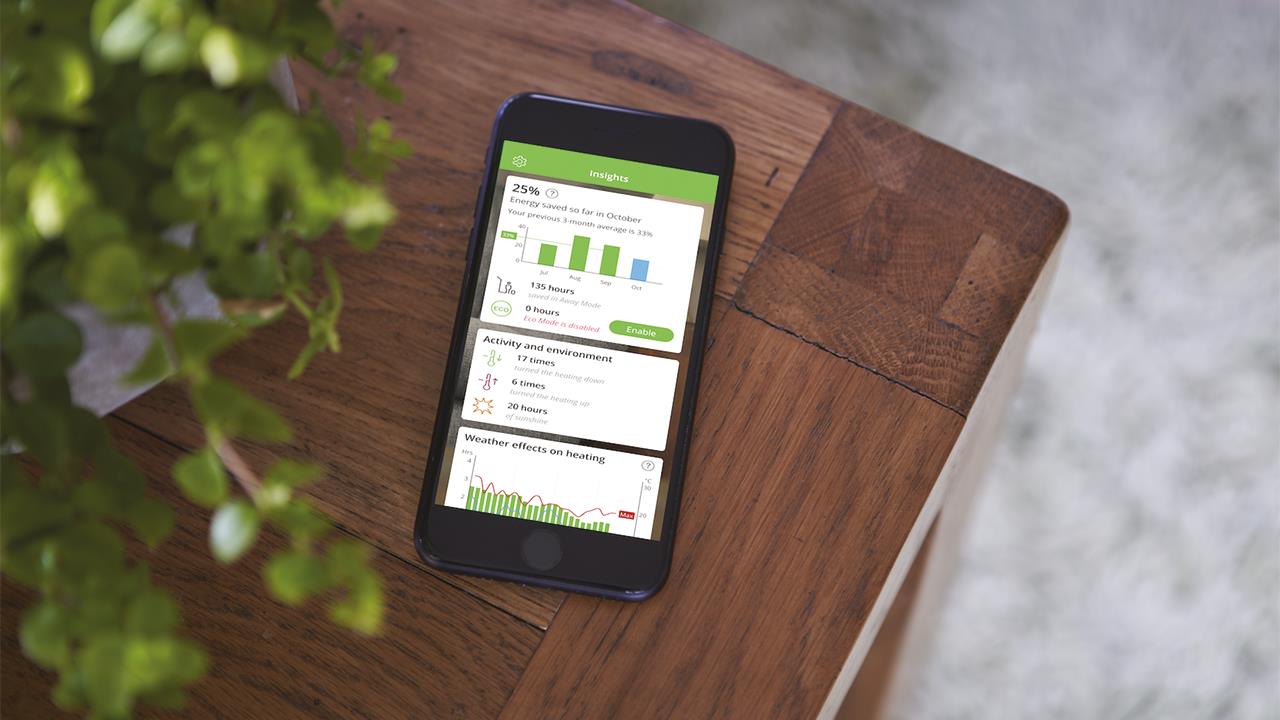

Natalie Wathan, Product Manager at Drayton, discusses the crucial role smart controls can play in the here and now to optimise the performance of boilers to reduce carbon emissions.
Many smart controls are designed with intuitive functions to improve the performance of the heating system in a way that both enhances homeowner comfort levels as well as helping to save energy. In a time where a large focus is placed on reaching our carbon neutral targets, these energy-saving features can go a long way in helping the boiler to work smarter, resulting in reduced emissions. So, what features should heating engineers look for when selecting a smart heating control?
Optimised running
One of the ways that a heating system can be made more efficient is by opting for a control system with features that optimise the performance of the heating system.
Weather compensation is one of the most common ways of achieving this, and is already built into many smart heating controls on the market. As well as helping installers meet the additional requirements set out by Boiler Plus, weather compensation technology works by monitoring the outdoor temperature and how this might affect the indoor temperature of the property. So, if it is warmer outside, this intuitive technology will change the point at which the boiler fires to ensure the property does not overshoot the desired setpoint, helping to reduce wasted energy.
For example, Wiser’s Eco Mode combines optimum stop and weather compensation to adapt heating schedules according to changing weather conditions. Advanced functions such as these give homeowners the peace of mind that their heating system is working as efficiently as possible.
Wasted energy
One of the most common ways in which energy is wasted is by having the heating on when it’s not required. While having to alter settings on a more traditional programmable thermostat can be an inconvenience that homeowners would rather not worry about, having a smart control makes it easier than ever to adjust heating schedules.
While systems like Wiser provide users with the ability to create a schedule via an app, most smart controls also offer the flexibility to adjust these settings at any time, remotely on a smartphone. This feature is ideal for customers with unpredictable lifestyles and it helps to reduce energy usage.
Additionally, some smart controls are able to detect when the house is empty based on the location of a smartphone, to automatically turn the heating off and reduce wastage. For example, Wiser customers can use ‘If This, Then That’ to create a rule that automatically activates Away Mode, for example, ‘When the last person leaves the house, turn on Away Mode’.
OpenTherm
Already widely used across Europe, OpenTherm is a piece of technology that communicates information between heating controls and the boiler in order to better regulate the temperature flow through the heating system. Typically, open protocols such as OpenTherm add an additional 10% energy-saving potential to the smart thermostats by allowing them to fully modulate boilers.
OpenTherm boilers ensure that the heating system will reach and stay at the desired setpoint in a more energy-efficient way by controlling the temperature of water leaving the boiler. Once the heating control detects the home or individual room is reaching the desired setpoint room temperature, it will tell the OpenTherm boiler to lower the system temperature ensuring maximum efficiency.
More importantly, OpenTherm is a piece of technology that will play a crucial role if heat pumps become the primary alternative heat source to a gas boiler in the future.
By allowing different technologies to ‘talk’ to each other within the same system, smart controls that benefit from OpenTherm will be able to modulate heat pumps to achieve optimal performance and make them an appealing solution to homeowners.
By recommending smart heating controls that include some, if not all, of these features, heating engineers can go a long way in helping homeowners get the most out of their heating system and contribute to the nation’s goal of reducing carbon emissions
If you'd like to keep up-to-date with the latest developments in the heating and plumbing industry, why not subscribe to our weekly newsletters? Just click the button below and you can ensure all the latest industry news and new product information lands in your inbox every week.